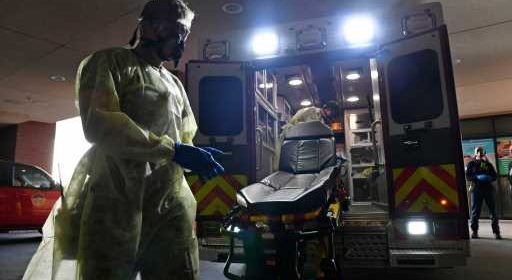Colorado ends “crisis standards of care” for hospital staffing, EMS

On Thursday, Colorado deactivated the state’s “crisis standards of care” that offered liability protection and guidance to hospitals and ambulance providers if they had to stretch their staff during the pandemic’s fall and winter waves.
The standards for medical staffing had been in place since Nov. 9, when the state’s fifth wave was nearing its peak and the possibility of running out of hospital beds was real. The state put the standards for emergency medical services into place on Jan. 7, when so many people were out sick with the omicron variant that it wasn’t clear if providers could staff their ambulances.
Since then, COVID-19 cases and hospitalizations have dropped to levels last seen in August, though there’s still little slack in the system as people seek care they couldn’t get during previous waves. Staffing shortages remain a problem, since some nurses and technicians have left the medical field.
Dr. Eric France, chief medical officer for the Colorado Department of Public Health and Environment, said the trend of declining infections is expected to continue in the near future, making the state’s crisis standards unnecessary.
“Crisis standards of care are an important tool to help manage health care delivery in times of acute crisis,” he said in a news release. “We recognize that health care systems continue to face challenges due to chronic staffing issues across the economy, and we thank health care workers for their service protecting Coloradans throughout the COVID-19 pandemic.”
The state never activated standards that allowed for care rationing, though a team updated them in November in anticipation that some patients might need to be sent home if a bed wasn’t available, or denied the highest level of care if resources were short.
A trade group representing Colorado emergency room doctors said they had to limit hospital admissions for a time because of a lack of staff to care for less-severely ill people, though they didn’t have to ration treatment for the sickest patients.
The emergency medical services standards allowed ambulance crews to limit care in certain circumstances, such as not attempting to resuscitate people who were unlikely to survive.
The hospital staffing standards allowed facilities to move staff into areas where they normally don’t work, ideally with a more-experienced person overseeing them. In the worst-care scenario, they could also ask patients’ family members to help with non-medical care, though there haven’t been any reports of that happening.
Source: Read Full Article